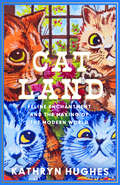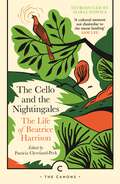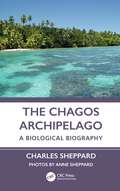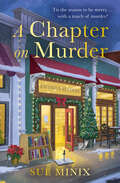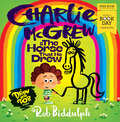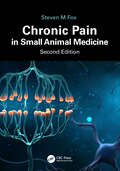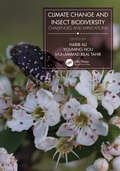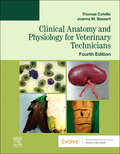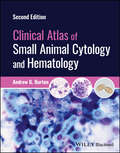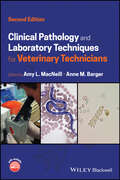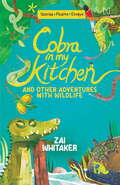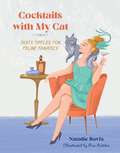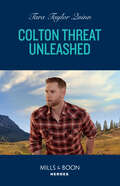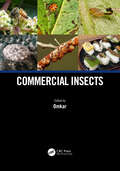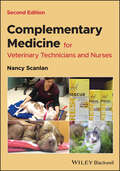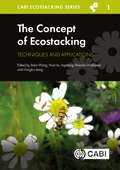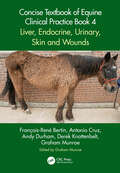- Table View
- List View
Catland: Feline Enchantment and the Making of the Modern World
by null Kathryn Hughes'Remarkable' Literary Review 'Startlingly original' Amanda Foreman Some called it a craze. To others it was a cult. Join prize-winning historian Kathryn Hughes to discover how Britain fell in love with cats and ushered in a new era. ‘He invented a whole cat world’ declared H. G. Wells of Louis Wain, the Edwardian artist whose anthropomorphic kittens made him a household name. His drawings were irresistible but Catland was more than the creation of one eccentric imagination. It was an attitude – a way of being in society while discreetly refusing to follow its rules. As cat capitalism boomed in the spectacular Edwardian age, prized animals changed hands for hundreds of pounds and a new industry sprung up to cater for their every need. Cats were no longer basement-dwelling pest-controllers, but stylish cultural subversives, more likely to flaunt a magnificent ruff and a pedigree from Persia. Wherever you found old conventions breaking down, there was a cat at the centre of the storm. Whether they were flying aeroplanes, sipping champagne or arguing about politics, Wain’s feline cast offered a sly take on the restless and risky culture of the post-Victorian world. No-one experienced these uncertainties more acutely than Wain himself, confined to a mental asylum while creating his most iconic work. Catland is a fascinating and fabulous unravelling of our obsession with cats, and the man dedicated to chronicling them. 'If a Louis Wain cat were reading this book, he would raise his topper in tribute’ The Times 'Brilliantly researched and unforgettable' Miranda Seymour 'Consistently fascinating … A tremendous literary feat in which we learn about Victorian sociology through the work of a remarkably unique artist' Kirkus, starred review
The Cello and the Nightingales: The Life of Beatrice Harrison (Canons)
by Beatrice Harrison Patricia Cleveland-PeckIn 1924, Beatrice Harrison broadcast a miracle to the world: a wild nightingale singing with her cello. Over a million people tuned in to hear the nightingale that night, and the BBC went on to broadcast their duet worldwide every spring until 1942. This transformed the public interest in nightingales – a species already in decline. If Beatrice’s duets with the nightingales touched a chord with the world, her own life proved to be as musical, free-spirited and inspiring. From her early years as a musical prodigy to recording with the most important composers of the day or playing for the wounded in the Second World War, Beatrice’s warmth and love for sharing music are as endearing now as they were to her original audiences.
The Chagos Archipelago: A Biological Biography
by Charles SheppardThis book is the story of the natural history of Chagos Archipelago, and of the efforts of many to get it recognized as an important and protected wildlife reserve. Exploring its immense natural riches and biodiversity, both on islands and in the marine environment, this book addresses competing claims to its resources, its politics, and the desire of some commercial and political parties to exploit the area. It is about the fight to conserve a wonderland of biodiversity and obtain its protection from exploitation, especially of its reefs and other marine life. This book shows the importance of the Chagos Archipelago and why so much research was done there. Rather than being a typical research book, this work presents research in a narrative form and describes the now substantial Government, UN, and legal interest in the archipelago since the UK was told to ‘decolonise’ it. It is also the story of our planet in miniature: the archipelago encapsulates much of the world’s conservation tribulations in a way we can much more easily understand. This narrative will explore the difficulties faced by the Chagos Archipelago, including displaced people, old and derelict industries (coconut in this case), the military, politics, rich and untouched ecosystems that some want to exploit, ruined habitats on land, climate change, and territorial claims. It will examine how all of these factors have affected the natural history, biodiversity, and conservation of the archipelago. With beautiful photography of the Chagos Archipelago coral reefs and islands, as well as graphs indicating their findings, this book offers professionals, researchers, academics, and students in conservation and biodiversity an insight into one of the world’s most diverse ecosystems. It is also accessible for non‑academic readers with an interest in climate change, biodiversity, and the importance of conservation.
The Chagos Archipelago: A Biological Biography
by Charles SheppardThis book is the story of the natural history of Chagos Archipelago, and of the efforts of many to get it recognized as an important and protected wildlife reserve. Exploring its immense natural riches and biodiversity, both on islands and in the marine environment, this book addresses competing claims to its resources, its politics, and the desire of some commercial and political parties to exploit the area. It is about the fight to conserve a wonderland of biodiversity and obtain its protection from exploitation, especially of its reefs and other marine life. This book shows the importance of the Chagos Archipelago and why so much research was done there. Rather than being a typical research book, this work presents research in a narrative form and describes the now substantial Government, UN, and legal interest in the archipelago since the UK was told to ‘decolonise’ it. It is also the story of our planet in miniature: the archipelago encapsulates much of the world’s conservation tribulations in a way we can much more easily understand. This narrative will explore the difficulties faced by the Chagos Archipelago, including displaced people, old and derelict industries (coconut in this case), the military, politics, rich and untouched ecosystems that some want to exploit, ruined habitats on land, climate change, and territorial claims. It will examine how all of these factors have affected the natural history, biodiversity, and conservation of the archipelago. With beautiful photography of the Chagos Archipelago coral reefs and islands, as well as graphs indicating their findings, this book offers professionals, researchers, academics, and students in conservation and biodiversity an insight into one of the world’s most diverse ecosystems. It is also accessible for non‑academic readers with an interest in climate change, biodiversity, and the importance of conservation.
A Chapter on Murder (The Bookstore Mystery Series)
by Sue MinixI loved writing murder mysteries, until I was thrust into the centre of one …
Charlie McGrew & the Horse that he Drew (World Book Day 2024)
by Rob BiddulphCharlie McGrew longs for a clippety companion but the sign says NO PETS – can he draw one instead? World Book Day 2024
Chronic Pain in Small Animal Medicine
by Steven M. FoxOver the past decade, since publication of the first edition of Chronic Pain in Small Animal Medicine, many advances have been made in the discipline of pain management, including embracement under the One Medicine initiative to improve the health and well-being of multiple species. Contributing significantly to this progress is the evidence base provided by multimodal management of chronic diseases such as osteoarthritis, a leading cause of pet euthanasia. These advances are explored in this updated edition, written for the veterinary professional seeking a greater depth of knowledge in the mechanisms of pain accompanying chronic disease states and the potential targets for treatment. Additional new sections describe newer drugs that are now in wide use, the Canine Osteoarthritis Staging Tool (COAST), novel approaches to cancer treatment, and cannabinoids and their functions. The book goes beyond common protocols by focusing on the latest evidence and our understanding of 'why and how to treat'. It describes and evaluates current physiological and biochemical theories of pain transmission without losing sight of the practical need for such information. Chronic Pain in Small Animal Medicine provides a foundation for advances in animal care and welfare and is necessary reading for veterinarians in practice and training. We’re living in an age of exciting, new discoveries, but these are only exciting if we are aware of these offerings and their optimal indications for use. This book aims to open veterinarians' eyes to the myriad new ways we can now treat chronic pain in small animals.
Chronic Pain in Small Animal Medicine
by Steven M. FoxOver the past decade, since publication of the first edition of Chronic Pain in Small Animal Medicine, many advances have been made in the discipline of pain management, including embracement under the One Medicine initiative to improve the health and well-being of multiple species. Contributing significantly to this progress is the evidence base provided by multimodal management of chronic diseases such as osteoarthritis, a leading cause of pet euthanasia. These advances are explored in this updated edition, written for the veterinary professional seeking a greater depth of knowledge in the mechanisms of pain accompanying chronic disease states and the potential targets for treatment. Additional new sections describe newer drugs that are now in wide use, the Canine Osteoarthritis Staging Tool (COAST), novel approaches to cancer treatment, and cannabinoids and their functions. The book goes beyond common protocols by focusing on the latest evidence and our understanding of 'why and how to treat'. It describes and evaluates current physiological and biochemical theories of pain transmission without losing sight of the practical need for such information. Chronic Pain in Small Animal Medicine provides a foundation for advances in animal care and welfare and is necessary reading for veterinarians in practice and training. We’re living in an age of exciting, new discoveries, but these are only exciting if we are aware of these offerings and their optimal indications for use. This book aims to open veterinarians' eyes to the myriad new ways we can now treat chronic pain in small animals.
Climate Change and Insect Biodiversity: Challenges and Implications
This up-to-date reference book discusses the effects of climate change on the biodiversity of insect pests. The changing climate and agricultural intensification practices impact negatively on insect biodiversity. The book explains the significance of insect pests for evaluating climatic impacts on a wide range of ecological systems. It covers the effect of climate change on pollinators and household and agricultural insect pests. It explains how climate-smart agriculture can enhance productivity and food security.FEATURES Reviews the effects of climate change on plant-insect interactions Includes topics such as insect biodiversity informatics and conservation Discusses food security, pest management, and beneficial and social insects Covers topics such as precision agriculture and climate-smart agriculture Provides insights on the relation between agriculture intensification and insect biodiversity This book is meant for scientists, researchers, and students working in the fields of agriculture, entomology, ecology, plant science, environmental biology, and biotechnology.
Climate Change and Insect Biodiversity: Challenges and Implications
by Habib Ali Youming Hou Muhammad Bilal TahirThis up-to-date reference book discusses the effects of climate change on the biodiversity of insect pests. The changing climate and agricultural intensification practices impact negatively on insect biodiversity. The book explains the significance of insect pests for evaluating climatic impacts on a wide range of ecological systems. It covers the effect of climate change on pollinators and household and agricultural insect pests. It explains how climate-smart agriculture can enhance productivity and food security.FEATURES Reviews the effects of climate change on plant-insect interactions Includes topics such as insect biodiversity informatics and conservation Discusses food security, pest management, and beneficial and social insects Covers topics such as precision agriculture and climate-smart agriculture Provides insights on the relation between agriculture intensification and insect biodiversity This book is meant for scientists, researchers, and students working in the fields of agriculture, entomology, ecology, plant science, environmental biology, and biotechnology.
Clinical Anatomy and Physiology for Veterinary Technicians - E-Book
by Thomas P. Colville Joanna M. BassertStart your veterinary technician education off on the right foot with Clinical Anatomy and Physiology for Veterinary Technicians, 4th Edition. Combining expert clinical coverage with engaging writing and vivid illustrations, this popular text is the key to understanding the anatomic and physiologic principles that will carry you throughout your career. In addition to its comprehensive coverage of the diverse ways in which animal bodies function at both the systemic and cellular levels, this textbook features a variety of helpful application boxes, vocabulary lists, and Test Yourself questions in every chapter to ensure you have a firm grasp of anatomic structure and its relevance to clinical practice. Clinical Application boxes throughout the text demonstrate the clinical relevance of anatomic and physiologic principles. Chapter outlines summarize the contents of each chapter at the major concept level. Test Yourself questions recap important information that appeared in the preceding section. Comprehensive glossary at the end of the text provides concise definitions and phonetic pronunciations of terms. NEW and UPDATED! Hundreds of high-quality, full color illustrations detail anatomic structures to enhance your understanding of their functions. NEW! Student chapter review questions on the Evolve companion website help reinforce key topics in each chapter.
Clinical Atlas of Small Animal Cytology and Hematology
by Andrew G. BurtonClinical Atlas of Small Animal Cytology and Hematology A comprehensive image-based reference to all aspects of small animal cytology and hematology, including sample collection and handling Clinical Atlas of Small Animal Cytology and Hematology, Second Edition is an essential, comprehensive resource for all veterinary professionals preparing and evaluating cytology and blood samples. Featuring hundreds of large, high-quality images, this fully updated new edition provides an even more extensive collection of exceptional photomicrographs, accompanied by detailed descriptions, figure legends and annotations to guide readers through the diagnostic process. The Second Edition adds an extensive new hematology section, new chapters detailing sample acquisition and preparation, and many new diseases across all chapters. Each section provides a detailed description of the microscopic appearance, clinical considerations, and prognosis for each disease, using a bullet point format to promote rapid review for efficient, evidence-based clinical decision making. Clinical Atlas of Small Animal Cytology and Hematology features: More than 750 high-quality cytology and hematology images 6 new chapters, including detailed sections on sample acquisition and the preparation and staining of cytology and hematology slides A comprehensive hematology section including an easy-to-follow blood smear interpretation guide, and detailed chapters describing erythrocytes, leukocytes, platelets and background features Updated cytology sections with new diseases and images in all chapters Easy to use, with superior quality images and detailed yet succinct clinical information, Clinical Atlas of Small Animal Cytology and Hematology is a powerful resource to help improve confidence and skill in the interpretation of cytology and hematology samples, and in turn positively impact patient care and outcomes.
Clinical Atlas of Small Animal Cytology and Hematology
by Andrew G. BurtonClinical Atlas of Small Animal Cytology and Hematology A comprehensive image-based reference to all aspects of small animal cytology and hematology, including sample collection and handling Clinical Atlas of Small Animal Cytology and Hematology, Second Edition is an essential, comprehensive resource for all veterinary professionals preparing and evaluating cytology and blood samples. Featuring hundreds of large, high-quality images, this fully updated new edition provides an even more extensive collection of exceptional photomicrographs, accompanied by detailed descriptions, figure legends and annotations to guide readers through the diagnostic process. The Second Edition adds an extensive new hematology section, new chapters detailing sample acquisition and preparation, and many new diseases across all chapters. Each section provides a detailed description of the microscopic appearance, clinical considerations, and prognosis for each disease, using a bullet point format to promote rapid review for efficient, evidence-based clinical decision making. Clinical Atlas of Small Animal Cytology and Hematology features: More than 750 high-quality cytology and hematology images 6 new chapters, including detailed sections on sample acquisition and the preparation and staining of cytology and hematology slides A comprehensive hematology section including an easy-to-follow blood smear interpretation guide, and detailed chapters describing erythrocytes, leukocytes, platelets and background features Updated cytology sections with new diseases and images in all chapters Easy to use, with superior quality images and detailed yet succinct clinical information, Clinical Atlas of Small Animal Cytology and Hematology is a powerful resource to help improve confidence and skill in the interpretation of cytology and hematology samples, and in turn positively impact patient care and outcomes.
Clinical Pathology and Laboratory Techniques for Veterinary Technicians
by Amy L. MacNeill Anne M. BargerClinical Pathology and Laboratory Techniques for Veterinary Technicians Up-to-date, practical reference book demonstrating laboratory procedures in dogs, cats, cattle and horses The newly revised and updated Second Edition of Clinical Pathology and Laboratory Techniques for Veterinary Technicians is an inclusive reference on laboratory procedures pertaining to small animals, horses, and cattle, providing information on hematology, hemostasis, clinical chemistry, urinalysis, parasitology, endocrine testing, and quality assurance. The text clarifies ‘how-to’ information while also discussing the importance of ‘why’ laboratory procedures are performed in a particular way, enabling readers to gain true understanding of the topics discussed. To aid in reader comprehension, high-quality photographs labeled with magnification and stain information, which clearly depict cellular morphology, inclusions, and infectious organisms, are included throughout each chapter. The text also offers key objectives, technician tip boxes, case examples, and a glossary of key terms, along with a companion website that provides instructor questions, and an answer key to multiple choice questions in the book. Clinical Pathology and Laboratory Techniques for Veterinary Technicians includes information on: Sample collection, handling, and quality assurance, to ensure laboratory test results are validHematology data collection techniques that may be used on a daily basis to evaluate the overall health of animal patientsClinical chemistry data to indicate organ function, covering how different chemicals measured in patient samples relate to the function of specific organs in the bodyIn-house parasitology procedures, with important advances in molecular diagnostics have been made that improve the detection and identification of parasitesInformation about common endocrinopathies and submission of samples for endocrine testing. With complete coverage of the subject, Clinical Pathology and Laboratory Techniques for Veterinary Technicians is an essential resource for students enrolled in veterinary technology programs and veterinary colleges, and may be used as a textbook to guide and supplement information provided in both didactic and laboratory-based clinical pathology courses.
Clinical Pathology and Laboratory Techniques for Veterinary Technicians
by Amy L. MacNeill Anne M. BargerClinical Pathology and Laboratory Techniques for Veterinary Technicians Up-to-date, practical reference book demonstrating laboratory procedures in dogs, cats, cattle and horses The newly revised and updated Second Edition of Clinical Pathology and Laboratory Techniques for Veterinary Technicians is an inclusive reference on laboratory procedures pertaining to small animals, horses, and cattle, providing information on hematology, hemostasis, clinical chemistry, urinalysis, parasitology, endocrine testing, and quality assurance. The text clarifies ‘how-to’ information while also discussing the importance of ‘why’ laboratory procedures are performed in a particular way, enabling readers to gain true understanding of the topics discussed. To aid in reader comprehension, high-quality photographs labeled with magnification and stain information, which clearly depict cellular morphology, inclusions, and infectious organisms, are included throughout each chapter. The text also offers key objectives, technician tip boxes, case examples, and a glossary of key terms, along with a companion website that provides instructor questions, and an answer key to multiple choice questions in the book. Clinical Pathology and Laboratory Techniques for Veterinary Technicians includes information on: Sample collection, handling, and quality assurance, to ensure laboratory test results are validHematology data collection techniques that may be used on a daily basis to evaluate the overall health of animal patientsClinical chemistry data to indicate organ function, covering how different chemicals measured in patient samples relate to the function of specific organs in the bodyIn-house parasitology procedures, with important advances in molecular diagnostics have been made that improve the detection and identification of parasitesInformation about common endocrinopathies and submission of samples for endocrine testing. With complete coverage of the subject, Clinical Pathology and Laboratory Techniques for Veterinary Technicians is an essential resource for students enrolled in veterinary technology programs and veterinary colleges, and may be used as a textbook to guide and supplement information provided in both didactic and laboratory-based clinical pathology courses.
Cobra in My Kitchen and Other Adventures with Wildlife
by Zai WhitakerROAR! HISS! SQUEAK! NYUK-NYUK!Wildlife sure sounds fun, doesn't it? Explore the wild with Zai Whitaker, an eager adventurer raised among India's pioneering conservation heroes! Together with Romulus Whitaker, the 'Snake Man of India', Zai developed the Madras Crocodile Bank, to research and conserve crocodiles and other 'herps'. From living with cobras as to hatching sea turtles and from watching birds to stalking termites, Zai has a long and thrilling trail of escapades. Her stories, poems and real-life accounts take you from Chennai to the Western Ghats, from the Andaman and Nicobar Islands to Papua New Guinea, and beyond into her wildly wonderful imagination! Beautifully illustrated, Cobra in my Kitchen and Other Adventures with Wildlife introduces you to the fascinating side of wriggly snakes, jumpy frogs, lively lizards, colourful chameleons and even a tiger or two, along with many more unmissable adventures! Hop on to this sensational safari of discoveries for children and the whole family!
Cocktails with My Cat: Tasty Tipples for Feline Fanatics
by Natalie BovisFascinating feline trivia meets easy-to-make drink recipes in this tasty tome dedicated to the fluffiest, sassiest, and most independent household pet—cats!—from bestselling author, award-winning mixologist, and passionate animal advocate, Natalie Bovis. If there's one thing we know, it's that we can survive anything with a furry friend and a cocktail by our side. Enter Cocktails with My Cat, which combines our devotion to cats with celebratory drinks in this charming, pet-centric cocktail book from Natalie Bovis of The Liquid Muse. Inside you&’ll find everything you need to know to set up your home bar and craft 60+ scrumptious cocktails organized into cat-themed chapters, featuring rescue cats, famous furbabies, cocktails for pawlidays throughout the year, and more. Featured recipes include: Downward Cat Seven Seas and Six Toes Bodega Rebel Kittea Café Cat Gods and Goddesses Bengali Sour Bay Breeze Cat-Man-Do Mornings Lion's Mane Bohemian Catsody Catnip Julep And more! Also included is a dose of feline history, gorgeous whimsical illustrations, and toast-worthy quotes about cats throughout. Cocktails with My Cat is the ideal companion for cat lovers and drink enthusiasts alike.
Colton Threat Unleashed (The Coltons of Owl Creek #1)
by Tara Taylor QuinnThey must work together…forever
Commercial Insects
Despite being the biggest group of organisms inhabiting Earth in both diversity and sheer numbers, insects are barely commercialized. Most of the standard textbooks of applied entomology talk about insect pest management, and when it comes to commercial aspects of insects, only apiculture, sericulture, and lac culture are talked about. This book will help bring other commercial uses of insects and their economic potential to the fore. This will generate interest in further research on the commercial potential of insects, thereby harnessing a much-found resource. The book has the following salient features: 1. Encompasses all major aspects of beneficial and commercial insects. 2. Deals with edible insects and mass culture of natural enemies and beneficial insects. 3. Emphasis on the mass cultivation of beneficial insects for obtaining yields. 4. Discusses stingless bees and their products. 5. Helps to solve the problem of food scarcity and improve food security.
Commercial Insects
by OmkarDespite being the biggest group of organisms inhabiting Earth in both diversity and sheer numbers, insects are barely commercialized. Most of the standard textbooks of applied entomology talk about insect pest management, and when it comes to commercial aspects of insects, only apiculture, sericulture, and lac culture are talked about. This book will help bring other commercial uses of insects and their economic potential to the fore. This will generate interest in further research on the commercial potential of insects, thereby harnessing a much-found resource. The book has the following salient features: 1. Encompasses all major aspects of beneficial and commercial insects. 2. Deals with edible insects and mass culture of natural enemies and beneficial insects. 3. Emphasis on the mass cultivation of beneficial insects for obtaining yields. 4. Discusses stingless bees and their products. 5. Helps to solve the problem of food scarcity and improve food security.
Complementary Medicine for Veterinary Technicians and Nurses
by Nancy ScanlanComplementary Medicine for Veterinary Technicians and Nurses p>Timely update of a practical reference book in complementary medicine with expansion of bibliographies, nutrition and diet, treatments, and therapies Complementary Medicine for Veterinary Technicians and Nurses provides a broad overview of complementary veterinary medicine in general, designed as a reference book covering the most commonly used complementary modalities, with an explanation of each modality and its historical background, procedure guidelines, and usefulness, along with practical tips. A range of both common and lesser-known modalities are covered, including physical therapy, holistic nutrition, acupuncture, chiropractic, Chinese, Western, and Ayurvedic herbal medicine, homeopathy, aromatherapy, and grief counseling. The text enables readers to assist with procedures associated with holistic medicine and knowledgeably discuss treatment options with clients. Outlining the respective roles of technicians and veterinarians throughout, Complementary Medicine for Veterinary Technicians and Nurses provides thorough coverage of integrative veterinary medicine in a user-friendly, digestible format. The book provides clinically-relevant patient history and release forms, a glossary of terms, quick reference charts, and contact information for additional resources and training. Written by a highly qualified author with significant experience in the field, Complementary Medicine for Veterinary Technicians and Nurses covers sample topics such as: TCM theory, chiropractic medicine, veterinary orthopedic manipulation (VOM), osteopathy, homeopathy, aromatherapy, and veterinary NAET Homotoxicology, applied kinesiology (AK), bach flower therapy, glandulars, cold laser therapy, magnetic therapy, ozone therapy, and prolotherapy BioNutritional analysis (BNA), immuno-augmentative therapy (IAT), color therapy, rife, EAV/Biotron, and animal communicators Detoxification, nutraceuticals, general nutrition, trigger point therapy, reiki, shiatsu, tuina, underwater treadmill therapy, and herbal pharmacy procedures Role of conventional medicine in a holistic practice, ozone therapy, pulsing magnetic field therapy, and assisi loop A unique resource covering different modalities that can be used to effectively treat health problems in animal patients, Complementary Medicine for Veterinary Technicians and Nurses is an essential resource for veterinary technicians and nurses, along with veterinarians and dedicated pet owners who wish to move beyond basic consumer resources.
Complementary Medicine for Veterinary Technicians and Nurses
by Nancy ScanlanComplementary Medicine for Veterinary Technicians and Nurses p>Timely update of a practical reference book in complementary medicine with expansion of bibliographies, nutrition and diet, treatments, and therapies Complementary Medicine for Veterinary Technicians and Nurses provides a broad overview of complementary veterinary medicine in general, designed as a reference book covering the most commonly used complementary modalities, with an explanation of each modality and its historical background, procedure guidelines, and usefulness, along with practical tips. A range of both common and lesser-known modalities are covered, including physical therapy, holistic nutrition, acupuncture, chiropractic, Chinese, Western, and Ayurvedic herbal medicine, homeopathy, aromatherapy, and grief counseling. The text enables readers to assist with procedures associated with holistic medicine and knowledgeably discuss treatment options with clients. Outlining the respective roles of technicians and veterinarians throughout, Complementary Medicine for Veterinary Technicians and Nurses provides thorough coverage of integrative veterinary medicine in a user-friendly, digestible format. The book provides clinically-relevant patient history and release forms, a glossary of terms, quick reference charts, and contact information for additional resources and training. Written by a highly qualified author with significant experience in the field, Complementary Medicine for Veterinary Technicians and Nurses covers sample topics such as: TCM theory, chiropractic medicine, veterinary orthopedic manipulation (VOM), osteopathy, homeopathy, aromatherapy, and veterinary NAET Homotoxicology, applied kinesiology (AK), bach flower therapy, glandulars, cold laser therapy, magnetic therapy, ozone therapy, and prolotherapy BioNutritional analysis (BNA), immuno-augmentative therapy (IAT), color therapy, rife, EAV/Biotron, and animal communicators Detoxification, nutraceuticals, general nutrition, trigger point therapy, reiki, shiatsu, tuina, underwater treadmill therapy, and herbal pharmacy procedures Role of conventional medicine in a holistic practice, ozone therapy, pulsing magnetic field therapy, and assisi loop A unique resource covering different modalities that can be used to effectively treat health problems in animal patients, Complementary Medicine for Veterinary Technicians and Nurses is an essential resource for veterinary technicians and nurses, along with veterinarians and dedicated pet owners who wish to move beyond basic consumer resources.
The Concept of Ecostacking: Techniques and Applications (Ecostacking Series)
by Heikki M.T. Hokkanen Dr Ingeborg Menzler-Hokkanen James D Blande Fanny Boerave Dr Daniel Carrillo Tomislav Cernava Xiaoyulong Chen Wen-Qiang Chu Gloria Gauthura Severin Hatt Jarmo K Holopainen Fathiya Khamis Pål Kvello Guang-Yun Li Dr Yaying Li Beatrice Muriithi Jinzhi Niu Levi Ombura Xian Wang Ziying Wang Qiu Yang Wei Yixia Wu Li Ya-Ying Kaijun ZhangEcostacking is a new concept and approach which aims to maximize the benefits of ecosystem service providers in cropping systems to help achieve the goal of long-term sustainable agriculture and food production. The term "ecostacking" means combining synergistically the beneficial services of functional biodiversity from all levels and types. It is a comprehensive approach, where the various ecosystem service providers are fully integrated with the rest of the cropping system including agronomic practices. It is an approach which goes beyond conventional Integrated Pest Management practises, and attempts to take advantage of all the functional biodiversity of a system. The main focus of ecostacking is on maximizing ecosystem services for biological control and pollination from beneficial arthropods, but the approach also utilizes other invertebrates (e.g., earthworms) as well as beneficial vertebrates such as bats, birds and small mammals. Microbes also provide invaluable ecosystem services including pest, disease, and weed control, either directly as components of "suppressive soils" or as plant colonizers (as endophytes or as epiphytic microbial flora). The ecostacking approach also aims to maximize other nature-provided services such as maintenance of soil health and nutrient cycling. The Concept of Ecostacking is the first book in a series which introduces ecostacking concepts to the reader and explores how this approach can be used in a variety of ways and in different cropping systems. The book defines this new concept and shows, using illustrative case studies from around the world, how ecostacking principles can be successfully employed in cropping systems in the open field, in greenhouses and in forestry. This book: · will serve as inspiration for developing further applications of this breakthrough technology for sustainable agricultural production. · is a must-read for everyone with an interest in developing sustainable crop protection systems and ecosystem management. · has been written and edited by the world's leading experts in this new and exciting endeavour.
Concise Textbook of Equine Clinical Practice Book 4: Liver, Endocrine, Urinary, Skin and Wounds
by François-René Bertin Antonio Cruz Andy Durham Derek KnottenbeltThis concise, practical text covers the essential information veterinary students need to succeed in equine medicine and surgery, focussing on skin, urinary, liver and endocrine diseases. Written for an international readership, the book conveys the core information in an easily digestible, precise form with extensive use of bullet points, tables, flow charts, diagrams, lists, protocols and extensive illustrations. Part of a five-book series that extracts and updates key information from Munroe’s Equine Surgery, Reproduction and Medicine, Second Edition, the book distils best practice in a logical straightforward clinical-based approach. It details clinical anatomy, physical clinical examination techniques, diagnostic techniques and normal parameters, emphasising the things regularly available to general practitioners with minimal information of advanced techniques. The liver section is divided into clinical evaluation, diagnostic tests, possible causes and treatment. The diagnostic approach to endocrine disease is followed by specific diseases of the thyroid, parathyroid, pituitary gland, equine metabolic syndrome and other miscellaneous disorders. The approach to urinary tract problems includes information on diagnostic tests and imaging, renal diseases,,and diseases of the ureter, bladder and urethra. The approach to skin disease is discussed in detail, including relevant diagnostic tests. Following this, individual skin diseases are covered under the headings of genetic, infectious, immune-mediated, nutritional, endocrine, idiopathic, traumatic and neoplastic causes. Finally, skin wounds, burns and infections of synovial structures are discussed. Ideal for veterinary students and nurses on clinical placements with horses as well as practitioners needing a quick reference ‘on the ground’.
Concise Textbook of Equine Clinical Practice Book 4: Liver, Endocrine, Urinary, Skin and Wounds
by François-René Bertin Antonio Cruz Andy Durham Derek KnottenbeltThis concise, practical text covers the essential information veterinary students need to succeed in equine medicine and surgery, focussing on skin, urinary, liver and endocrine diseases. Written for an international readership, the book conveys the core information in an easily digestible, precise form with extensive use of bullet points, tables, flow charts, diagrams, lists, protocols and extensive illustrations. Part of a five-book series that extracts and updates key information from Munroe’s Equine Surgery, Reproduction and Medicine, Second Edition, the book distils best practice in a logical straightforward clinical-based approach. It details clinical anatomy, physical clinical examination techniques, diagnostic techniques and normal parameters, emphasising the things regularly available to general practitioners with minimal information of advanced techniques. The liver section is divided into clinical evaluation, diagnostic tests, possible causes and treatment. The diagnostic approach to endocrine disease is followed by specific diseases of the thyroid, parathyroid, pituitary gland, equine metabolic syndrome and other miscellaneous disorders. The approach to urinary tract problems includes information on diagnostic tests and imaging, renal diseases,,and diseases of the ureter, bladder and urethra. The approach to skin disease is discussed in detail, including relevant diagnostic tests. Following this, individual skin diseases are covered under the headings of genetic, infectious, immune-mediated, nutritional, endocrine, idiopathic, traumatic and neoplastic causes. Finally, skin wounds, burns and infections of synovial structures are discussed. Ideal for veterinary students and nurses on clinical placements with horses as well as practitioners needing a quick reference ‘on the ground’.
